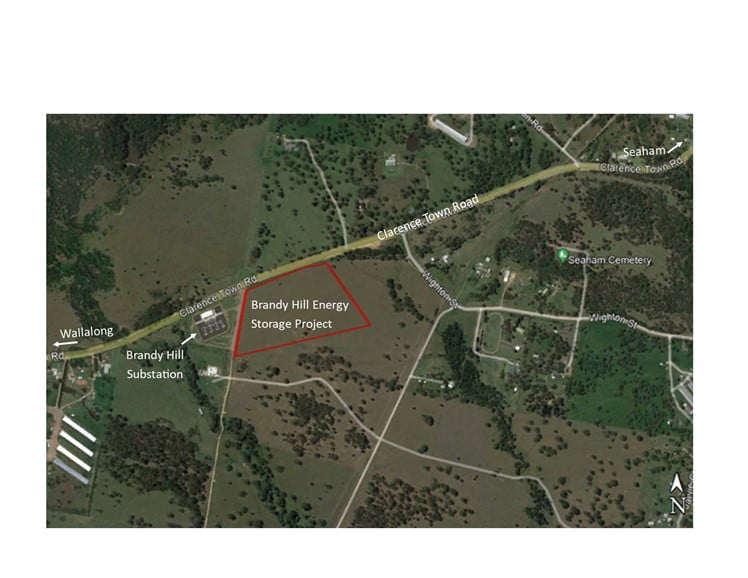Brandy Hill Battery Project
By Brian Tehan, Member of Renew and Executive Member EcoNetwork.
Renewable Energy Systems Ltd (RES) is proposing to build a 250 MW battery at Brandy Hill next to an existing substation. “The Brandy Hill Energy Storage development is approximately 2km South-West of Seaham, 5km North-East of Brandy Hill and 30km northwest of Newcastle, and is located within the Port Stephens Local Government Area in NSW”. The proposed project is next to a large substation for connection to the grid. The proposal is for a 250 MW (maximum power) with up to 1000 MWh of storage.
RES is the world’s largest independent renewable energy company, active in 11 countries around the globe. They manage over 3GW of renewable energy assets around Australia, with more currently in planning and development phases. They also provide Asset Management services in all NEM states and the WEM (WA). They told us that their business is in building renewable energy projects using their own funds, selling them, and then managing them for the investors.
According to their site, they have
3 GW Assets Managed in Australia consisting of
> 1.6GW Wind energy assets managed (10 projects)
> 1.4GW Solar energy assets managed (21 projects)

The Location
Due to its close proximity to the existing Brandy Hill substation, the project site is ideal for direct connection into the AusGrid network via the Tomago-Stroud transmission line which connects into the Brandy Hill substation.
Other considerations were:
- Excellent transport access
- Not within a flood area
- Topography and terrain that meet the requirements
The Battery
These kind of batteries provide dispatchable power for periods of up to a few hours and may provide Frequency Control Auxiliary Services (FCAS) – which are paid services. Frequency control keeps the grid frequency stable at 50 HZ. The battery storage (1000MWh) would provide up to 4 hours at maximum power (250 MW) or significantly more at lower output. Despite what you might read on the internet ‘on demand’ power stations, such as battery and gas, do not run often at full power or for very long periods. For example, the Snowy Hydro Colongra gas plant on the Central Coast has 4 x Open Cycle Gas Turbines of around 166 MW for a combined total of 667 MW. Last year it was used for less than 1% of its capacity (Capacity Factor). That is because it’s usually called on to run at less than 100% capacity for relatively short periods – similar to a battery.
Ideally, the battery will be charged by renewable energy but, unfortunately, NSW has been a laggard in adding renewable energy to its grid and is way behind SA and Victoria. However, the good news is that we should soon see significantly more renewables with many projects being built or in planning. With more renewable energy and several proposed batteries (including this one), it will be very difficult to justify the proposed additional gas (or diesel) plant, of the same size as Colongra, at Kurri Kurri (to be financed by taxpayers).
Batteries can provide a very good return by charging up with cheap, excess renewable energy and selling it at a higher price when there is more demand and less supply in the National Energy Market (NEM). This does not increase prices, it generally reduces them because the fossil fuel generators, usually, bid much higher – the costs of starting and stopping generators are significant but, basically, close to zero for batteries.
In states with more renewable energy, there are periods when there is too much renewable energy, producing negative prices and, occasionally, requiring wind or solar farms to turn off. Batteries and pumped hydro solve this problem and the opposite problem where there is more demand than generation, such as the evening peak, Batteries are obviously very good for grid stability because they can cut in in less than a second when there are unforeseen outages.
Conclusion
From an emissions, cost and efficiency point of view, it is difficult to see any negatives from this proposed Battery Project. If the project is approved and financed, hopefully, RES will also engage with local training organisations to train local staff for some of the installation and ongoing management of the facility. For more details including the environmental benefits, see the link below.
Useful Links:
Brandy Hill Battery Energy Storage Project
The community are invited to provide valuable local insight and feedback about the proposed project. Please complete the Community Survey.
